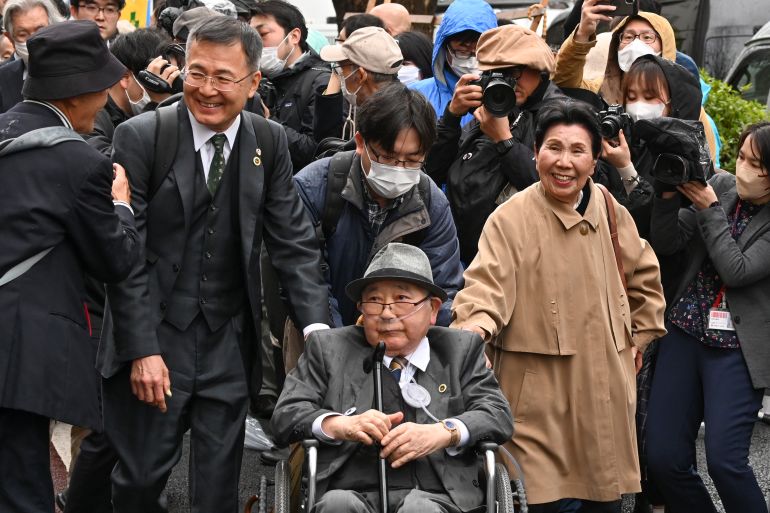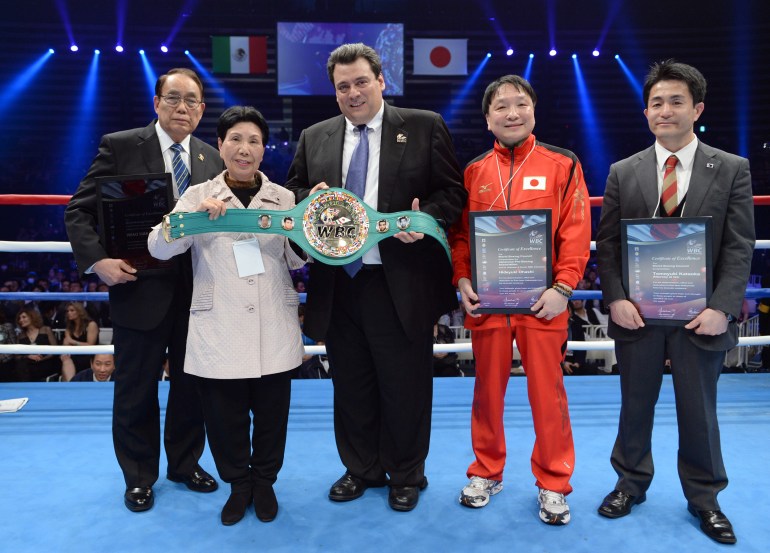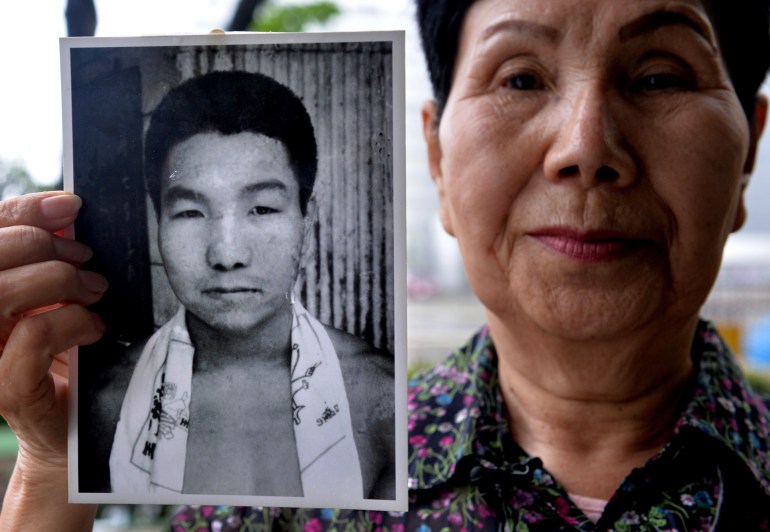Japan court backs retrial for 87-year-old death row inmate
Iwao Hakamada was held in solitary confinement for 45 years until DNA evidence emerged to undermine his conviction.

The Tokyo High Court has said 87-year-old Iwao Hakamada, who spent more than 45 years on death row after a controversial conviction for murder, should be granted a retrial.
Hakamada was given “temporary release” in March 2014 after new DNA evidence cast serious doubt on the reliability of his conviction and the court that initially convicted him called for a retrial.
Keep reading
list of 4 itemsRecord number of people executed for drug offences in 2023
Executions in Iran hit 8-year high in 2023
Australian writer Yang Hengjun sentenced to death on China spy charges
Hakamada’s older sister Hideko, who has campaigned for years for her brother, said she was relieved at Monday’s developments.
“I was waiting for this day for 57 years and it has come,” the 90-year-old said, according to the AFP news agency. “Finally a weight has been lifted from my shoulders.”
Hideaki Nakagawa, director of Amnesty International Japan, said the ruling was a “long-overdue chance” at justice for the former professional boxer.
“Hakamada’s conviction was based on a forced ‘confession’ and there are serious doubts about the other evidence used against him,” Nakagawa said in a statement. “Yet at the age of 87, he has still not been given the opportunity to challenge the verdict that has kept him under the constant threat of the gallows for most of his life.”
Amnesty urged prosecutors not to appeal against the court ruling.
Who is Iwao Hakamada?
Hakamada was a former professional boxer who was at one time ranked sixth in Japan in the featherweight category.
He turned professional in 1957 at the age of 21 and later married a cabaret dancer with whom he had one son.
But in 1962, Hakamada suffered a knee injury that ended his boxing career.

Then in his 30s, he opened a bar but it do not do well. His marriage also broke down.
Deep in debt, in 1965, he met Fumio Hashiguchi, the owner of a miso (soy paste) factory where he got a job.
What happened at the miso factory?
On June 30, 1966, Hashiguchi was found dead along with his wife and two teenage children.
The family had been robbed, and their bodies and house were set on fire.
Why was Hakamada accused?
Two months after the killings, Hakamada was arrested.
There appeared to be no evidence to link him to the crimes.
Police interrogated Hakamada for 20 days without a lawyer until, eventually, he confessed.
In testimony signed on September 9, 1966, Hakamada said he was responsible for the robbery, the murders, and the fire. He agreed with the police allegations that he was wearing pyjamas at the time, and used a small knife used to peel the soybeans to kill the family.
Hakamada later retracted his statement, saying he had been beaten, threatened, and forced to confess by the police.
During the trial, a laboratory specialist testified that the drop of blood found in Hakamada’s pyjamas was insufficient to be analysed.
A year after the murders and Hakamada’s arrest, prosecutors and courts produced bloodstained clothes as key evidence.
They claimed the five items of clothing that had been found inside a miso tank about 14 months after the murder were the clothes worn by the killer.
Hakamada’s supporters said the clothes did not fit him, and the stains were too fresh for a crime that had happened more than a year before.

Despite the concerns, Hakamada was convicted and jailed in 1968. His subsequent efforts to retract the confession failed and the verdict was upheld by Japan’s top court in 1980.
What happened on death row?
Hakamada is thought to have spent more time on death row than any other prisoner anywhere in the world.
Much of that time was in solitary confinement.
Condemned prisoners in Japan are usually told that they will be executed on the morning that the sentence will be carried out, and Hakamada’s supporters say the experience compounded the trauma of his imprisonment causing him longtime mental health issues.
The country’s Ministry of Justice has argued such an approach is necessary to “prevent the prisoner from being disturbed”.
The prisoners’ families are typically informed of the hanging only after it has taken place, according to Amnesty.
There have been incidents where prisoners were executed while their case for a retrial is being heard.
The last execution in Japan was in July 2022 when Tomohiro Kato was hanged for killing seven people in the Tokyo electronics district of Akihabara in 2008.
Japan and the United States are among the few developed nations still to use the death penalty.
Why was he released?
Hakamada was given a temporary release on March 27, 2014, when the Shizuoka district court, which had sentenced him to death in 1968, agreed he should have a retrial because of new DNA evidence related to the clothing.
In later appeals, Hakamada’s defence team had argued the clothing evidence was planted.
The decision to open a retrial was also based on more than 600 other pieces of evidence which the prosecutor was ordered by the court to disclose, according to Amnesty, which said some of the pieces undermined earlier evidence offered in court.
While he has been out of prison for nine years and living with Hideko, Hakamada remains under sentence of death and prosecutors have appealed against the decision to allow him a retrial.
In June 2018, the Tokyo High Court overruled the lower court’s decision and denied a retrial. After Hakamada’s lawyers appealed, the Supreme Court in December 2020 overturned the High Court’s decision and asked the lower court to re-examine the appeal.